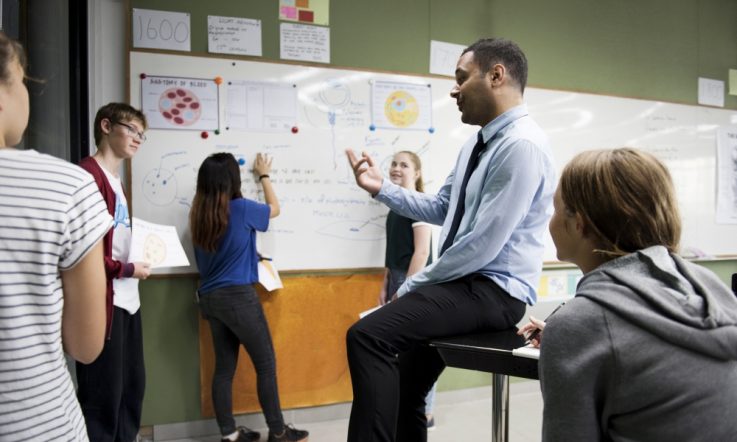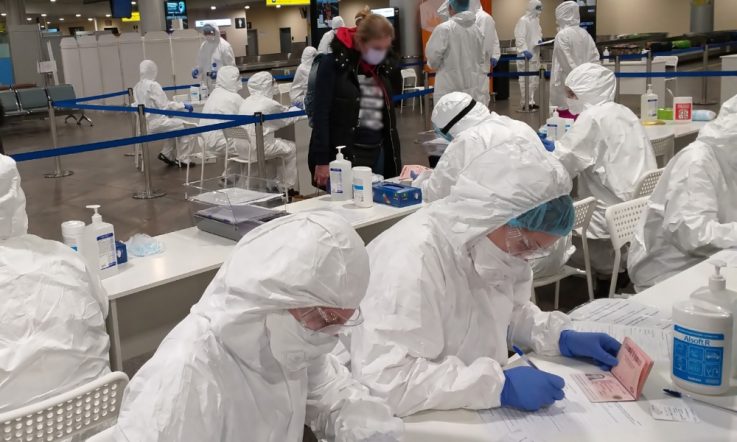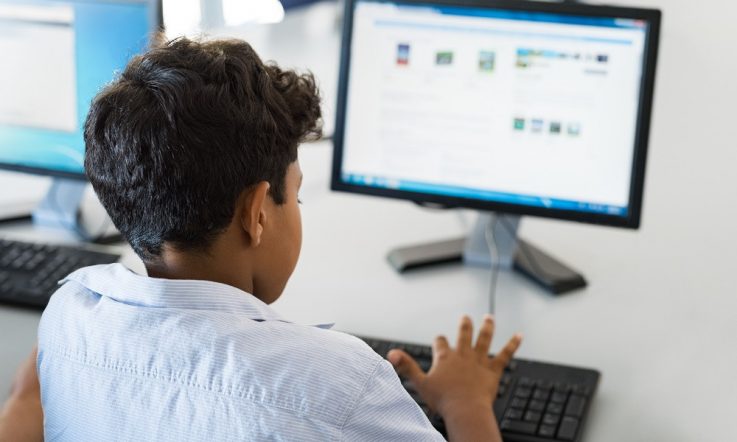As the COVID-19 situation unfolds, schools are closing to protect their students and the broader public – but this doesn't mean a stop to learning for students or teachers. If the current crisis (and the bushfire crisis earlier in the year) teaches us anything, it is that there is a need across all educational sectors to plan for sustainable, quality, flexible learning options.
When we think about flexible learning, we inevitably think about technology. The current circumstances will no doubt highlight nationwide issues of access and equity to technology; bandwidth (Taylor, 2020) and the skillset of educators (Fernández & Fernández, 2016), (Roulston et al., 2019) and their students across sectors to use technology for learning (Ford, 2015).
What does this mean for schools?
Obviously, in the immediate present, schools are doing the best job they can to give students access to resources for learning and these may include using technology to conduct remote teaching using video platforms – where devices are available and the internet is accessible to students and teachers. Schools generally also have content management systems where students and parents can access resources to support remote learning.
Moving forward, there are research-based decisions that education systems and schools can, and should, be making now in relation to technology-enabled learning that will build resilience and sustainability in learning well into the future.
We can think about these decisions as three phases
- Immediate response phase: continuity of learning and teaching
- Interim capacity building phase: moving to online learning and teaching
- Sustainability phase: flexible learning and teaching options are embedded in practice
Phase 1: Immediate response – continuity of learning and teaching
In this phase, schools are organising the best available learning and teaching options as schools are closing. Key actions include:
Audit what is available to you
This is a whole of school collaborative effort. Share the workload and the information you gather.
- the technologies your school already has and what technology your students have access to
- staff and student skills in the use of different technologies
- free educational technology tools, e.g. Google classrooms, Zoom. Get your staff to critique these tools. Check the security and privacy issues with the various technologies and identify what might be suitable for your immediate needs
- identify whether some areas of the curriculum and year levels are a higher priority over others.
If you are part of a network of schools or education system, collaborate to do this audit across your network. This is where your system leaders may be able to support you.
Make an immediate plan
Trust your teachers. Remember your parents.
Considerations for planning:
- your school resources developed by your teachers will be better for learning than free educational technology tools, so use these first as a basis of remote teaching;
- organise your school staff into remote teaching teams – in this way not everyone needs to be online at the same time and teachers can be working;
- if you are part of a network or system, work out ways in which you can share resources and workload;
- parents' technological skills are very important in supporting and developing student skill levels (Chase, 2010) – communicate to parents how they can support their students in using technology;
- loan your school hardware to students with internet access who don't have access to this at home;
- your plan for continuity of teaching and learning should include asynchronous activities (activities that students can work on, on their own or with their parents, that don't require them to be online) and non-technology-based resources and work; and,
- involving parents/caregivers in learning has a greater impact on improving student outcomes than socioeconomics (Desforges & Abouchaar, 2003; Goldman, 2005). Consider how you might involve them in student learning and how you can best communicate with the parent body and support them to support their children.
Strategies which will help take the pressure off
- Create a timetable. Allow for asynchronous activities, physical activity and activities such as board games (not computer games) that can be played with siblings or caregivers. For physical activity, make explicit what you want students to do (from the curriculum) or evaluate training apps by actually doing the recommended exercises. Incorporate mindfulness and meditation into the timetable.
- Write a profile for each class/group/child you teach which includes what you need to know about their circumstances and how they will keep you informed of changes. Schedule time to catch up with students one-on-one for a short period of time each week. Build this into your teaching timetable. Remember, you will have this time if you have planned for asynchronous activities in your timetable.
- Think about enlisting guest speakers for webinars. These could be one-off or regular presenters. Help them tailor their presentations to meet the needs of the curriculum and your students. Record the presentations. Share the presentations across your school's network.
- Record videos in advance that help students (and parents) with technology skills as well as content.
- Include existing materials like virtual tours in your learning sequences.
- Get students to investigate a personal topic of interest and report back to the group maybe using a video. Older students might pursue a free online course of their choice to report back on from Futurelearn or other free resources.
- Consider ways in which you can continue your buddy or mentor systems online.
Phase 2: From remote teaching continuation to online learning
In this phase, you will be working to put the required structures and capacity in place to deliver high-quality, engaging learning experiences for all students. You will be moving from synchronous to asynchronous teaching and learning options.
Implement a Learning Management System
Just as in the regular classroom, the learning environment is important.
Learning Management System https://en.wikipedia.org/wiki/Learning_management_system such as Moodle or Canvas are specifically designed to support online learning through the way they function. For example: how learning resources, including multimedia resources, can be organised and accessed; how students can engage in collaborative activities with their peers and teachers through tools such as discussion boards and wikis; and, how student engagement and progress can be tracked through learning analytics. Many education systems already have these systems for teacher professional learning.
Teachers already have sophisticated knowledge of planning learning sequences and different pedagogical approaches. In this phase:
Upskill your staff and focus on collaboration
Online teaching and learning is different from the regular classroom and offers excellent opportunities to deprivatise practice.
- Build expertise in online learning design through accessing external expertise and professional learning opportunities for teachers (see the work of Gilly Salmon).
- Ensure all your teachers have online teaching skills and can use the Learning Management System to deliver high-quality, engaging learning experiences.
- Develop learning sequences for particular subjects or cohorts. This takes time, so the more teachers can work in teams in schools and across schools to do this, the easier and quicker it will be.
- Provide opportunities for teachers to share and showcase their practice – using the same collaboration tools as they use for online teaching.
Phase 3: Sustainability – flexible learning and teaching embedded in practice
This is your long-term sustainability phase. You will have built your organisational structures and teacher capacity to offer online, blended or face-to-face learning. Your school will be resilient to interruptions to face-to-face learning and students will have an enriched learning experience regardless of the mode of learning.
References
Chase, A. (2010). Digital technology in- and out-of-school: A comparative study of nature and levels of student use and engagement. (Doctor of Education), University of Western Australia, Perth, Western Australia.
Desforges, C., & Abouchaar, A. (2003). The impact of parental involvement, parental support and family education on pupil achievement and adjustment: A literature review (Vol. 433). London: DfES.
Fernández Cruz, F. & Fernández Díaz, M. (2016). Los docentes de la Generación Z y sus competencias digitales [Generation z's teachers and their digital skills]. Comunicar. Media Education Research Journal, 24(1), 97-105. https://www.scipedia.com/public/Fernandez_Fernandez_2016a
Ford, M. (2015, November 7). School students' digital skills in decline despite prolific use: Report. ABC News. https://www.abc.net.au/news/2015-11-17/school-students-digital-skills-in-decline-despite-prolific-use/6945672
Goldman, R. 2005. Fathers' involvement in their children's education. London: National Family and Parenting Institute.
Roulston, S., Cowan, P., Brown, M., Austin, R., & O'Hara, J. (2019). All aboard or still at check-in? Teacher educators' use of digital technologies: Lessons from a small island. Education and Information Technologies, 24(6), 3785-3802. https://doi.org/10.1007/s10639-019-09951-x
Taylor, J. (2020, March 14). Coronavirus and the nbn: Will your broadband be up to speed if you have to work from home? The Guardian. https://www.theguardian.com/technology/2020/mar/13/coronavirus-and-the-nbn-will-your-broadband-be-up-to-speed-if-you-have-to-work-from-home
The process of auditing available technology tools, and the skills of staff and students should be a whole of school collaborative effort. As a school leader, what systems do you already have (or will need to put in place) to ensure this is the case?
In Phase 1, the authors give the following advice: ‘Trust your teachers. Remember your parents.’ As a teacher – what resources have you developed that you can share with colleagues? As a school leader – what opportunities already exist to communicate to parents and carers? How can you make best use of these?



